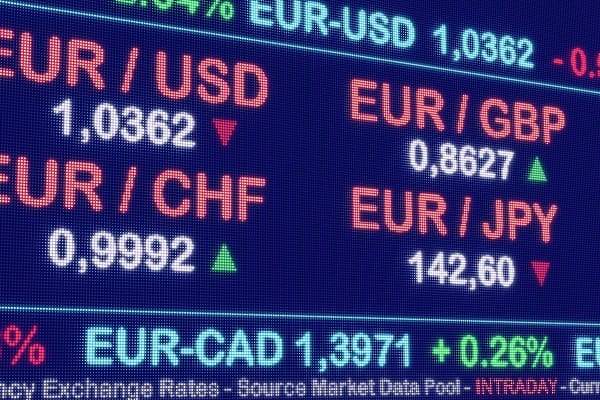Euro was able to continue recording gains against the US dollar (EUR/USD) by 0.38%, despite some pressure it was exposed to this morning with the new data.
While the euro reached its lowest level against the British pound (EUR/GBP) since last September, at 0.85359.
The euro’s gains today coincided with the publication of mixed PMI data in the Eurozone, which indicated a larger-than-expected contraction in services activities, with a smaller-than-expected contraction in manufacturing activities, along with weak demand conditions in general.
While the gains of the pound sterling came with the stronger-than-expected performance of manufacturing and services activities in the United Kingdom, against mixed performance in the Eurozone, in addition to the rise in British gilt yields to their highest levels in more than a month.
Today, we witnessed the preliminary reading of the services and manufacturing purchasing managers indices (PMI) for the month of January for Germany, France, the Eurozone, and the United Kingdom.
Today’s euro movements also come in anticipation of the European Central Bank meeting tomorrow. While the focus remains on Christine Lagarde’s speech following the interest rate decision announcement, which is expected to keep current rates as they are, looking for any indication about the timing and size of the interest rate cut this year.
Starting with France, which began the new year with a further contraction in private sector activities, in light of the decline in demand and new business for the ninth month in a row and the decline in manufacturing outputs at the fastest pace in three and a half years, according to the HCOB and S&P Global report.
The services PMI recorded 45 points, which was lower than expectations of 46.1, which is the lowest reading since last September. While manufacturing activities recorded a contraction slightly less than expected and at the slowest pace since last September, with a reading of 43.2.
The report indicated that this decline in economic activities and new business was the result of weak clients’ activity, the prevailing state of uncertainty, and general weakness in the economy. In addition, this month witnessed an increase in inflationary pressures, led by wages, energy and raw materials.
In Germany, the picture was not much brighter. The services PMI recorded the lowest reading since last August at 47.6. But on the other hand, manufacturing activities contracted at the slowest pace since February of last year, with a reading of 45.4.
Private sector activities continued to decline for the seventh consecutive month, in light of a widespread decline in demand. While the report indicated that customers’ hesitation in spending as a result of high financing costs and uncertainty, in addition to the decline in export activities as a result of the troubles facing the global economy, are the most important reasons behind the decline in activities.
The services sector also suffered from further pressure from wages, while factory input prices also contracted, but at the slowest pace in nine months, as a result of the disruption in supply chains as a result of what is happening in the Red Sea.
Across the Eurozone, manufacturing activity contracted at the slowest pace since last March, with the manufacturing PMI recording a higher-than-expected reading of 46.6. As for services activities, they declined at the fastest pace since last October, with a reading of 48.4 for the services PMI.
While the report indicated that this slowdown in contraction came with the slowest pace of decline in new orders since last June, which has led to stabilization of employment and supported optimism about the new year.
In the United Kingdom, the picture was noticeably brighter than in the Eurozone, with the fastest expansion in services activities since last May and the slowest pace of contraction in manufacturing activities since last April as well. The services and manufacturing PMIs recorded higher readings than expected at 53.8 and 47.3, respectively.
While these positive numbers of economic activities supported improved demand conditions and more optimism about the outlook of the business sector, this confidence, in turn, has strengthened the desire of consumers and clients to spend, according to the S&P Global report.
While companies have suffered from the fastest pace of increase in input costs since last August, due to the rise in shipping costs in light of what is happening in the Red Sea, which also led to an increase in delays in the arrival of shipments, in addition to more pressure from rising wages, especially in the services sector.
In bond markets, Eurozone data prompted some declines in bond yields. After the yield on ten-year German Bunds reached its highest level since the fifth of last December, yesterday, at 2.594%, it fell today and reached the level of 2.538% at the peak of the declines.
As for the United Kingdom, the yield on ten-year gilts reached its highest level since December 12, at 4.041%, after today’s positive data.
This coincided with the lackluster performance of US Treasury bond yields this week, after they reached their highest levels in more than a month last Friday.




Leave a Comment